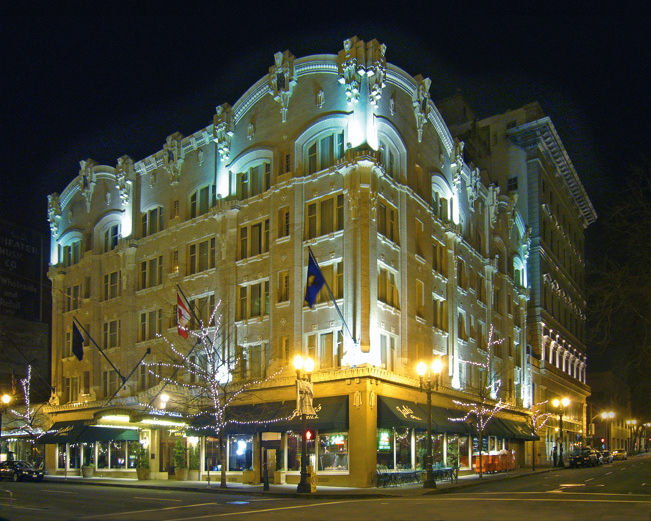Period Piece

When the Seward Hotel opened in 1909 on the corner of SW 10th Avenue and Alder Street, it represented Portland’s zealous rebound from the depression of the 1890s, during which—this may sound familiar—unemployment hovered around 10 percent for five consecutive years. With its stained glass, ornate mahogany moldings, and Oriental carpets, the building embodied the opulence that accompanied the 1905 Lewis and Clark Exposition and, as one of the city’s first luxury hotels, it announced to the rest of the country that Portland had arrived. Unfortunately, the hotel itself later departed, at least figuratively: from 1909 to 1932, it had three different owners, changed its name to the Governor, and slid into disrepair until a $7 million renovation, in 1991, restored the building to its former glory. This year, the Governor celebrates its centennial birthday, and while it may no longer be the city’s only luxury hotel, it’s got enough history oozing from the original woodwork to keep it booked solid.
HAUNTED HALLWAYS According to legend, in the 1910s a little girl was decapitated while playing in a dumbwaiter. The dumbwaiters aren’t used today, but the child’s ghost has been said to make an occasional appearance in the halls and sometimes to slam closet doors.
SENTINELS On many historic buildings, gargoyles perch atop roofs to symbolically ward off danger. But William C. Knighton, Oregon’s first state architect, proved practically prescient about Portland’s future as a hub of design and technology when he set Transformer-like robots atop the Governor.
BURIED BOOZE When Portland outlawed booze in 1914, the hotel took its grog underground—literally. A speakeasy was tucked two floors beneath where the mural of Lewis and Clark’s epic journey stands now, in Jake’s Grill. Getting a drink these days would be tricky, though: a couple of tons of cement now stand between you and the site of the old bar.
HAPPY FEET What is now the Governor’s West Wing was a separate building—the Princeton Building—until 1992, when the hotel acquired the former Elks Temple and removed walls to join the two structures. Before it became a popular event space, the Princeton’s regal Heritage Ballroom housed offices for the Works Progress Administration and, during World War II, served as an induction center.
SPY GLASS The Fireside Room, in the Elks Temple, was the only room where women could roam unchaperoned in the 1920s. Sort of. The full-length mirror the ladies might have used to reposition their cloches was actually a two-way mirror. On the other side, in the Library Room, the men could watch the womenfolk while chewing their cigars. The looking glass remains today, but is now just a standard mirror.
FILM SET In the 1930s, Atiyeh Bros. carpet store, the family business of former Oregon Governor Vic Atiyeh, shared an entrance with the Governor. The carpet store operated from the space that is now Jake’s Grill. After Atiyeh Bros. departed and the area had been renovated, Gus Van Sant chose this as the perfect place to film the bonfire scene in My Own Private Idaho.



